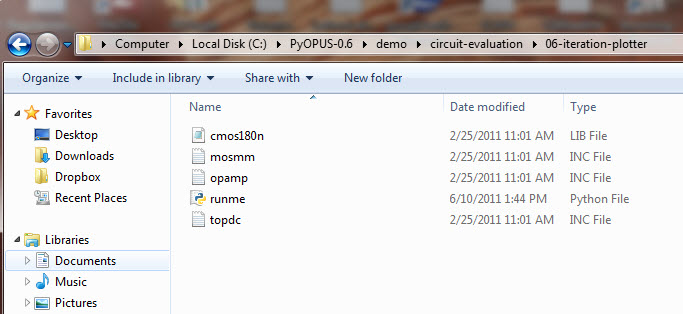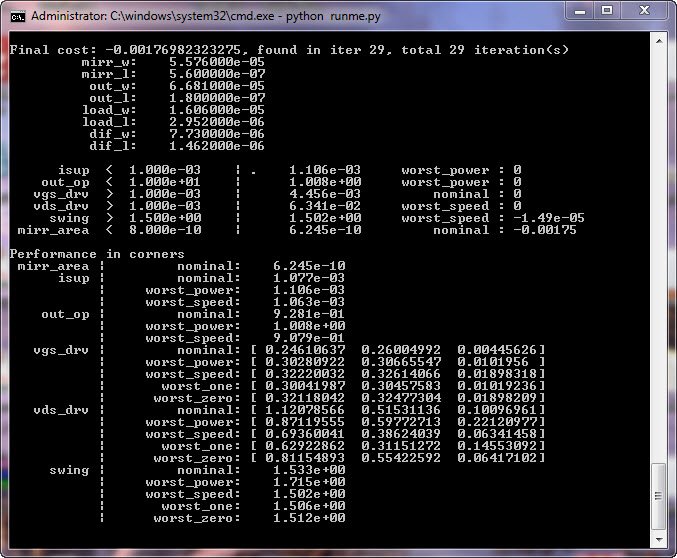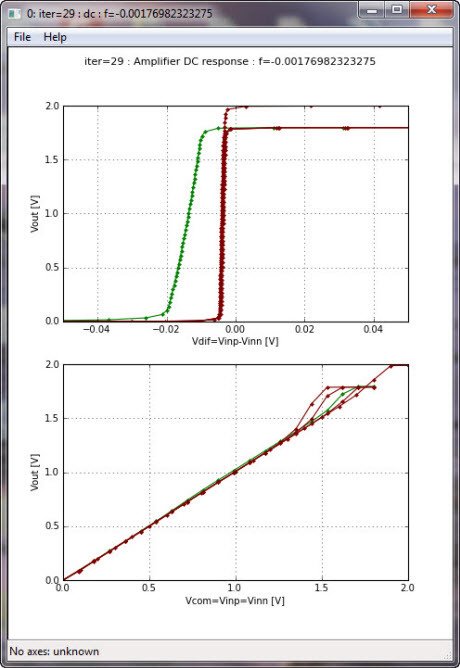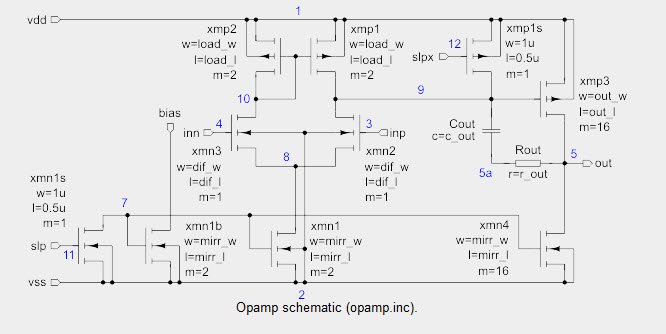Now we can run a python program from the Demo subfolder of PyOPUS sources. You find the file attached to this page. Download it, unpack it, for example in C: and go to C:/PyOPUS-0.6/demo/circuit-evaluation/06-iteration-plotter

the cmos180n.lib file is a CMOS 0.18u library for SPICE OPUS, mosmm.inc models the NMOS and CMOS subcircuits depending by channel dimensions parameters W and L, the device multiplier m, the threshold voltage vtmm and the mobility variation of the transistor u0mm. For these last parameters 0 means that both have a nominal value, 1 corresponds to 1-sigma positive deviation, and -1 corresponds to 1-sigma negative deviation.
the opamp.inc file describes the following operational amplifier

the topdc.inc describes this circuit

runme.py is the python program. The code is quite long. Basically it runs a PerfomanceEvaluator() function to extract values as the gain, the bandwith, etc. The CostEvaluator() constructs a cost function evaluator using the perfomance evaluator results. The cost function value will be printed for every iteration and the details will be printed every time a better circuit is found (the best-yet cost function value decreses) and the circuit’s performance is plotted in two windows.
When the optimization is finished the best circuit is re-evaluated and its performance is printed in the terminal window. The performance of the final circuit is plotted in the same windows as the performance of the best-yet circuit was plotted during optimization.
in the terminal window (cmd.exe) we can run the example by typing
python runme.py
The performance of the best circuit:

The dc plot window of the final result. below is the differential input voltage sweep

and this is the common mode input voltage sweep

To exit, close GUI control window

[attachments title=”PyOPUSSoftware” logged_users=2 include=”728″]

